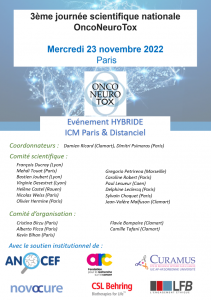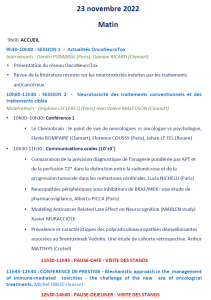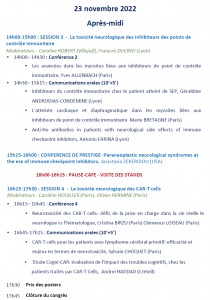Primary cerebral lymphoma: a new classification of the disease aimed at improving the lives of patients
HERNANDEZ Isaïas, doctoral student; Dr. ALENTORN Agusti, Dr. Karima Mokhtari in the team of Pr Khê Hoang-Xuan and Pr Marc Sanson in the genetics and development of brain tumors laboratory at the Pitié-Salpêtrière hospital (ICM)
Primary cerebral nervous system lymphoma (PCNSL) is a particularly curious disease because it originates in lymphatic tissues such as lymph nodes, spleen and thymus, but develops in the brain. In addition, because almost nothing is known about this disease, the options and the effectiveness of diagnosis and treatment are so limited that the consequences are unfortunate for patients and their families. Fortunately, recent technologies allow us to extract, read, decode and interpret the information contained in genetic material. Thanks to a national effort organized by the “Cartes d’Identité des Tumeurs” (CIT) program, we managed to have the largest cohort of patients (with genetic data) in the world which led us to find a new molecular classification PCL tumors and better understand the disease.
What is a PCNSL and the “Cartes d’Identité des Tumeurs” program?
PCNSLs originate from B cells but originate in nervous tissue such as the brain and rarely migrate to other tissues. MRI can suggest the diagnosis but it often needs to be confirmed by tissue biopsy or cerebrospinal fluid (CSF) cytology. Furthermore, current treatments include corticosteroids, chemotherapy and radiotherapy but unfortunately, due to a poor response of the majority of patients to treatment, the median survival is only 26 months.
CIT is a research program dedicated to cancer genomics which has produced a database without equivalent in France and Europe. Genomics is the scientific discipline concerned with the structure and functioning of our genetic heritage. PCNSLs and other cancers result from a particular series of alterations in our genetic heritage, unique to each person, so a treatment may prove effective in one patient and without effect in another. By understanding this diversity, we can improve diagnostic and prognostic tests and also the prediction of patient response to treatments.
How was the new classification of PCNSLs made?
The combination of tumor genomic data, obtained with state-of-the-art technology and associated with patient clinical data (survival, MRIs, etc.) has allowed us to better characterize PCNSL tumors and their molecular signatures. In practice we have used billions of variables and several statistical tools to find tumors that share the most informative and biologically and clinically important variables. This analysis led us to find four different molecular subtypes of PCNSLs linked with crucial implications.
What are the implications of these molecular subtypes of PCNSLs?
Starting with the diagnosis, we have developed an algorithm identifying the molecular subtypes of PCNSLs from simple genomic data. Depending on the prognosis, we found that each subtype responds more or less well to the standard treatment, chemotherapy. For example, the CS4 subtype has a 2.6 times greater response, whereas the opposite happens for the CS3 subtype. Moreover, the CS3 subtype is associated with a specific localization on the brain which could explain this diminished response to conventional treatment. After combining all of our information, we have found that each subtype may respond better to specific treatments, which may allow us to customize options for each patient.
What’s the next step?
Although our research has already allowed us to determine molecular subtypes of PCNSLs and to consider personalized treatments for each, there are still many aspects to explore. We initially plan to carry out experimental tests using cancer cells and animal models to corroborate its feasibility. By remaining bearers of hope, we will continue to walk on the road, the end of which is not far away, in order to improve the lives of patients.
👉 Find the publication here: https://www.annalsofoncology.org/article/S0923-7534(22)04732-9/fulltext


